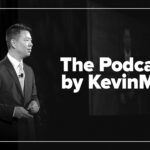When it comes to retirement savings, 401(k) and 457(b) plans are both popular options, but they have some key differences. While private employers typically offer 401(k) plans, 457(b) plans are available to employees of state and local governments and tax-exempt organizations under IRS Section 501, excluding churches and church-controlled organizations.
What is a 457 plan?
While a 401(k) is considered a defined contribution retirement account, a 457(b) plan is technically a deferred compensation arrangement, which allows qualifying employees to accrue additional savings on a tax-deferred basis for retirement. Contributions are made on a pre-tax basis, reducing taxable income for the contribution year. Earnings grow tax-deferred, with taxes due upon distribution.
457 plan vs. 401(k)
In operation, both 401(k) and 457(b) accounts function similarly, allowing employees to contribute pre-tax income and grow their savings tax-deferred. This similarity often leads to confusion about the differences between the two plans, especially when employees need to decide how to manage their funds after changing jobs or when entering retirement.
Let’s explore these differences using Dr. Alex Garfield as an example. He recently changed jobs and is now grappling with his 457(b) balance.
How do 457 plans work when you change jobs?
Dr. Alex Garfield, formerly the chief medical officer at a South Carolina hospital, accepted an attractive offer from a larger medical system last month. While excited about his new job, he’s faced with a complicated decision regarding his 457(b) plan.
Dr. Garfield’s 457(b) plan is a non-governmental plan, which brings distinct challenges compared to a government-backed plan. Understanding these differences is crucial, as they affect his options.
Key considerations for your 457 plan when changing jobs
When you leave your job, you have several options regarding your 457 plan, but the details depend on whether the plan is governmental or non-governmental. Here’s what Dr. Garfield (and you) should know:
-
Mandatory distribution: Non-governmental 457(b) plans often require mandatory distribution upon separation from service. Now that Dr. Garfield has left his former employer, he may not have the option to leave his money in the plan.
-
No rollover to IRA: Can you roll over a 457 plan to an IRA (individual retirement account)? It depends. Unlike governmental 457(b) plans, Dr. Garfield’s non-governmental plan generally cannot be rolled over to an IRA or another qualified retirement plan.
-
Taxation: The entire balance will likely become taxable income in the year of distribution, which could potentially push Dr. Garfield into a higher tax bracket. This is something to consider carefully, as it could affect his financial situation in the short term.
-
Distribution schedule: Some plans may allow for a distribution schedule rather than a lump sum payout. If Dr. Garfield’s plan allows this, it could help him reduce the tax burden by spreading out the income across multiple tax years.
What you can do if you are in Dr. Garfield’s shoes
If you’re also facing a job change and need to make decisions about your 457(b) plan, here are some actionable steps:
-
Review plan documents: Carefully examine the 457(b) plan documents to understand the specific rules and options available to you. If necessary, call the plan administrator to confirm the distribution requirements and any flexibility in the timing or method of distribution.
-
Tax planning: 457 plan distributions can significantly impact your taxes, especially if you face a large payout. A tax professional can help you strategize how to minimize your tax liability. In some cases, it might be possible to spread the income over two tax years to reduce the impact.
-
Consider timing: Explore options to spread the income over two tax years, although this may be challenging if you’ve already changed jobs.
-
Evaluate new employer’s benefits: Review your new employer’s retirement savings options. If they offer a 457(b) plan, consider maximizing contributions to make up for any lost tax-deferred savings opportunity.
Unique features of 457(b) plans to keep in mind
In addition to the distribution considerations, you should also keep these unique features of 457(b) plans in mind:
-
457 plan withdrawal rules: Unlike 401(k) plans, 457(b) plans do not impose a 10 percent penalty for withdrawals before age 59½. However, the distribution is still subject to standard income taxes.
-
Double limit catch-up provision: While this may not apply to your current situation, 457(b) plans offer a special catch-up provision in the three years prior to retirement age (not beginning at age 50 like 401(k) plans). This can allow for significantly higher contributions. In 2025, the catch-up contribution amount is $23,500, which means the maximum income deferral for a qualifying employee is $47,000.
Plan ahead for a smooth transition
Navigating the distribution of a 457(b) plan after changing jobs can be complex, especially for non-governmental plans. While your options may be limited compared to simply rolling over a 401(k) balance to an IRA, careful planning can help optimize the financial outcome.
By working closely with your financial planner and CPA, you can make informed decisions that support your long-term financial health as you embark on this new career chapter.
If you’re in a similar position, be sure to review your 457(b) plan details, consult with financial and tax professionals, and explore your new employer’s retirement benefits. By taking these steps, you’ll be in a strong position to make the best decision for your retirement future.
Names and locations have been changed in this article to protect the identity of those involved.
Any discussion of taxes is for general information purposes only, does not purport to be complete or cover every situation, and should not be construed as legal, tax, or accounting advice. Clients should confer with their qualified legal, tax, and accounting advisors as appropriate.
Shane Tenny is managing partner, Spaugh Dameron Tenny, LLC, and host of The Prosperous Doc podcast.
Securities, investment advisory and financial planning services offered through qualified Registered Representatives of MML Investors Services, LLC. Member SIPC. Supervisory office: 4350 Congress Street, Suite 300, Charlotte, NC 28209, (704) 557-9600. Spaugh Dameron Tenny is not a subsidiary or affiliate of MML Investors Services, LLC or its affiliated companies. CRN202510-3194816






















![Sibling advice for surviving the medical school marathon [PODCAST]](https://kevinmd.com/wp-content/uploads/Design-1-190x100.jpg)


![Leadership buy-in is the key to preventing burnout [PODCAST]](https://kevinmd.com/wp-content/uploads/Design-4-190x100.jpg)
![Understanding the unseen role of back-to-school diagnostics [PODCAST]](https://kevinmd.com/wp-content/uploads/Design-3-1-190x100.jpg)
